Persuasive writing and advertising techniques convince people to take specific actions or agree with you. You give them a choice and a compelling reason to make the decision you want them to make, and (if you’re good at it) they won’t be able to refuse.
The key is that the user – the reader, customer, etc. – has to win, too. You can’t be the only winner. Therefore, you can’t mislead – both of you have to actually benefit from the outcome.
Persuasive techniques in advertising are about presenting your case in the best way that shows the other person how it will benefit them. Don’t worry about expressing how it will benefit you – you’ve already decided it will, and the customer doesn’t care about that.
These strategies aren’t a replacement for a stellar product or service. Assuming you already sell or offer something you’re proud of, there are specific things you can do in your advertising to be more persuasive.
- 1 1. Answer the “Why?” Before Worrying About Any Other Persuasive Techniques
- 2 2. Upset and Solve
- 3 3. Address Every Concern
- 4 4. Tell a Story (and Include Other Persuasive Techniques)
- 5 5. Make Easy-to-Understand Comparisons
- 6 6. Repeat What You Want Remembered
- 7 7. Remain Consistent
- 8 8. Show the Future
- 9 9. Provide Social Proof
- 10 10. Invite People to Join Your Crew
- 11 Putting it All Together: Combining Several Persuasive Techniques in One Ad
- 12 Final Thoughts About Using Persuasive Techniques in Advertising
1. Answer the “Why?” Before Worrying About Any Other Persuasive Techniques
You can’t tell a person what to do or how to do it and expect them to immediately get on your side. You have to tell them why they should do it. Any time you want to make a request, answer the “why” first.
Think of what it was like when you were a kid and a grownup asked you to do something that you didn’t understand the purpose of. You would say, “Why?” and they would say, “Because I said so.” Remember how frustrating that was? It immediately made you not want to do the thing, even if it would actually benefit you. Don’t do that to your audience.
Even though this is arguably one of the most important persuasive techniques you can employ, so few ads make use of it. This one from Designlab is an exception, as it goes beyond the “what” and “how” to say why you should take their online program: to land your first job in the field. You may not know for sure that you want to take their online UX course or get one-on-one training from a mentor. You do know that you want a job in the field, though, so the “how” doesn’t matter so much anymore.

Source: Instagram
2. Upset and Solve
This piggybacks off answering the “why.” For both persuasive techniques, you have to acknowledge the customer’s pain point. Your first step is to identify the problem and state it in a way that makes it seem pretty bad. You want to upset the reader – not in a way that makes them hate your brand, but in a way that makes them hate the problem. Remember, you’re not pointing out the problem to put the user in pain. Instead, you’re showing that you understand their issue and empathize with them. You’re saying, me too, not, too bad for you! Next, offer your solution.
Ad agency VMLY&R promoted themselves in this way when they purchased Your Weekend, an adult magazine from Poland. They then turned the very last issue into a sexism-free symbol of feminism. First, they appealed to anyone who’s offended by magazines that have “reduced women to sex objects,” and then they fixed (part of) the problem. On their website, they explain their choice. “We used this purchase as an opportunity to challenge the culture of sexism and gender inequality that the magazine had contributed to building.”

Source: VMLY&R
3. Address Every Concern
Advertising copy can be pretty long, but there’s a reason for that – and it’s not because every potential customer must read a 500-word Facebook post. It’s because the consumer has to read as much as they need to before they commit. That may be one sentence or it may be 50. The advertiser has to address every possible concern so that the user has no choice but to say, “Well, yeah, you’re right. I’m in.”
You can’t present your case and then leave people with unanswered questions or unaddressed concerns. Now, you probably can’t address every single concern in a single ad. But you can answer the top concerns briefly, and direct people to where they can find out more. Or, create a series of posts that address all of those concerns. Instagram Stories is great for something like that, as are Q&A sessions on Facebook Live.
This Instagram ad from Facebook is a good example of communicating a lot of problem-solvers in short ad copy. The ad includes several images with overlaid text that tell what you’ll learn and how long each lesson will take you. There’s a lot to know when it comes to Facebook Ads, and this ad basically says, “Oh, you’re wondering about XYZ? We’ll teach you.” That way, you won’t hesitate at some point because you’re afraid you won’t learn enough.

Source: Instagram
4. Tell a Story (and Include Other Persuasive Techniques)
Storytelling is one of the more difficult persuasive techniques to master because it’s so broad. Plus, storytelling on its own won’t work – you’ll need to use some of the other techniques on this list along with it. Storytelling works so well because it’s like you’re planting a seed and then letting the reader convince themselves – you Inception them. We’re all our own most compelling person, so if you can get someone to decide “on their own,” you’ve won.
The goal of The&Partnership’s campaign for British Gas was to have consumers view the company as more than an energy supplier. They used several animated videos to show how British Gas impacts daily life, all through storytelling. In one, there’s even a momma mouse telling stories to her baby mice, which is very meta. The video is called “No Place Like Home” and shows how our homes serve as havens, and therefore need to be maintained.

Source: The&Partnership
5. Make Easy-to-Understand Comparisons
When presenting new information, it’s difficult to get customers to bridge the gap between what they already know and what you need them to know. This is where comparisons come in, often by way of analogies, metaphors and similes. In case you snoozed during English class, here’s a quick overview of each one:
- Analogy: Comparison of two sets of things to show how their relationships to one another are the same. For example, a desk is to an office as a sink is to a kitchen. Both the desk and the kitchen are within larger rooms. So, you wouldn’t say, “a desk is to an office as a kitchen is to a sink,” because the sets don’t share the same type of relationship.
- Metaphor: A word or phrase that takes on an abstract meaning. For example, an office desk is a portal to the future you.
- Simile: Comparison between two things using the word “as” or “like.” For example, an office desk is like a kitchen sink, meaning they’re both workspaces in their respective rooms.
An analogy, metaphor or simile can relate something unfamiliar to something the reader already accepts as true. It immediately makes your point seem more true, too, which is why it’s included among different persuasive techniques. This is a step toward reframing the consumer’s mindset. They can’t argue with the point they know to be true, and so they won’t try to argue with the second point you make, either. You may also want to check out this article, where we talk about using metaphors and sensory language to improve your marketing.
Show Differences Instead of Similarities
One more thing: comparisons can show the major differences between two things instead of the similarities. For example, a lot of brands compare the cost of their service to paying for a cup of coffee a day, showing how low the price tag is. However, if you want to push one service over the other, you can compare its pricing to a service that costs a lot more, or even to a competitor’s service. Shaw Academy does this by showing the regular price for their freebie digital marketing course:
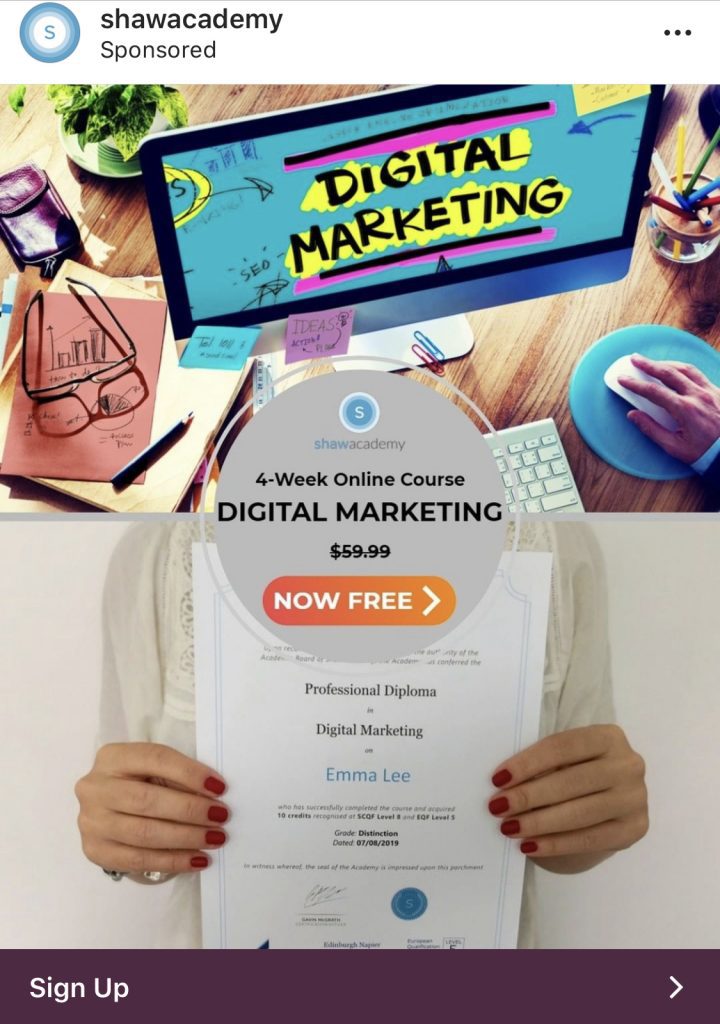
Source: Instagram
Entrepreneur does this, too, by comparing the regular cost of their masterclass to the discounted cost. Also, it’s smart to use non-rounded numbers, because it makes you focus on them more and realize what a huge discount you get. You don’t need to use any tricks for this type of comparison – just put one against the other to clearly show the audience which one is a better choice.

Source: Facebook
6. Repeat What You Want Remembered
In order for a person to agree with you, they have to understand what you’re saying – and it’s difficult to get them to understand if you only say it one time. Instead of literally repeating your message verbatim, though, say it in different ways. Say it directly, then use an example, tell a story, share user feedback or post a quote from an influencer. Then, summarize your message in a new way to wrap up.
Wieden + Kennedy used repetition as one of the persuasive techniques in their Dream Crazier ad campaign for Nike. By stitching together different sayings, athletes and examples of going after your wildest dreams, they make the same point several times.
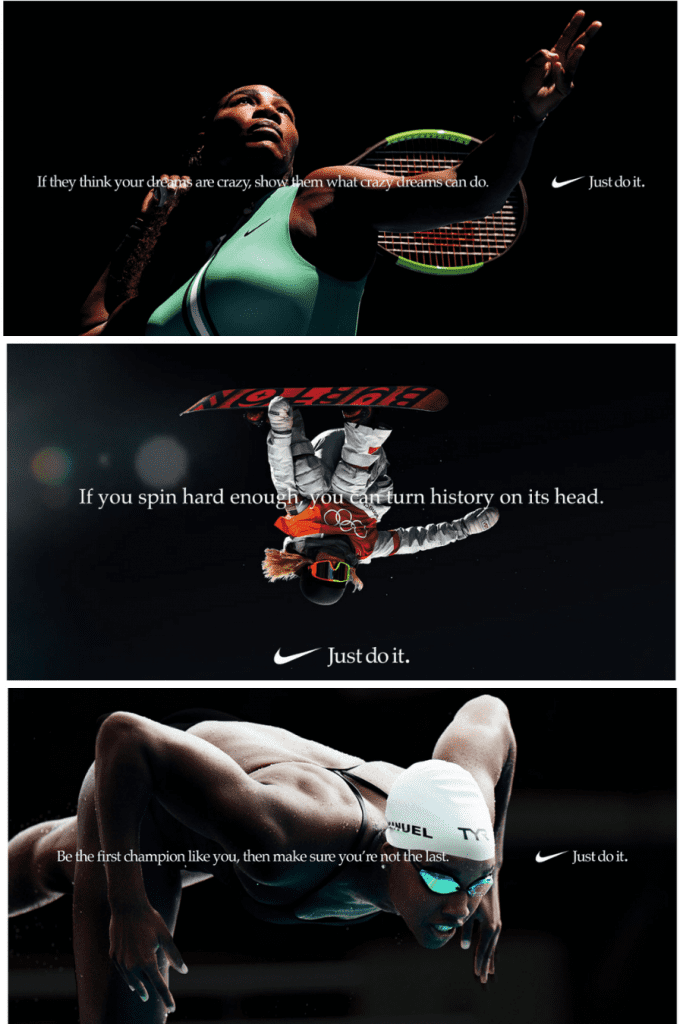
Source: Wieden + Kennedy
7. Remain Consistent
When you’re consistent, your audience will value you, because they’ll trust you and see that you stand by what you believe. When you’re inconsistent, you seem untrustworthy, unstable and unreliable – and no brand wants to come off that way.
Note that consistency is not the same as repetition. They have similarities, but they’re still different persuasive techniques. Consistency has to do with showing up the same way time and time again and routinely delivering on the promises you made. Repetition is more about crafting your messages in similar ways to drive the point home.
The campaign that Droga5 designed for MailChimp is a fun example of consistency. They created nine projects that rhymed with MailChimp without ever actually using the brand’s name. (This was a nod to the infamous mispronunciation of MailChimp in the Serial podcast.) Plus, the campaign maintained consistency by always being fun, circling back to MailChimp’s philosophy of users doing things their way.
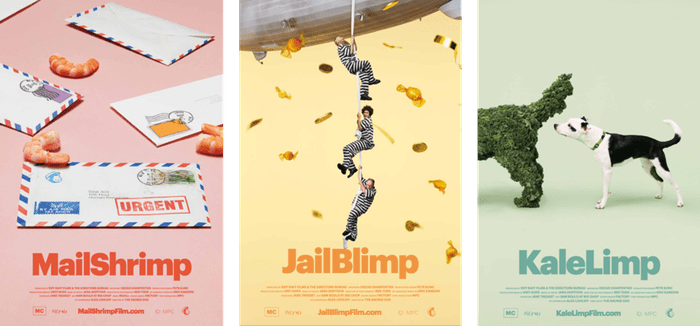
Source: Droga5
You can also remain consistent within a single piece of content by making your point up front, proving it throughout and then summarizing it at the end. Again, this isn’t quite repetition. Instead, it’s about making sure you stay the course and that everything you create goes back to your main point without getting off track.
8. Show the Future
This is a common trope in writing conclusions or outros – you show the reader what life will be like if they don’t follow your advice, and then you compare that to their future if they do. You have to link current events and actions to future outcomes and restate why your solution will lead them to the outcome they want. Part of this relies on showing your credibility, which the next technique – social proof – can help with. You can also show your credibility by sharing your credentials (degrees, certifications, successes, time spent in the industry) or your deep grasp of the subject.
Here’s another example from Droga5. Their campaign for United Rentals, an equipment rental company, started with visuals of what happens when work equipment sits idle. The campaign then continued on to explain how United Rentals can help customers make their worksites more efficient.

Source: Droga5
Social proof is powerful, whether consumers are taking recommendations from people they know or from strangers. We look to others for guidance when making a decision. Many brands show social proof through referrals and testimonials (which are easy to collect and display using a testimonial plugin). However, you can go beyond that. For example:
- Coordinate with authorities or influencers to include their quotes and expert advice in your content.
- Interview others so that your fans see you have some sway – if you can get a powerful person to sit down for an interview, that must mean you’re important, too.
- Don’t be afraid to name-drop, especially if you have the visuals to back it up, like a photo of you at an event with recognizable faces.
Remember Coca-Cola’s “Share a Coke” campaign? Coke bottles were wrapped with labels that had “Share a Coke with…” and then popular names. This was a brilliant way of spreading word-of-mouth and increasing referrals. One person would buy a bottle of Coke and then give it away to a family member or friend. Whenever a bottle was purchased and then shared with someone, it was like walking, sipping social proof.

Source: Coke Store
10. Invite People to Join Your Crew
People like to feel that they’re part of something. Unifying your target audience – wealthy finance professionals, just-out-of-college hipsters, eco-conscious devotees, whatever – will help them buy-in to what you offer. Find out what your target audience wants to be a part of, and then give them the option to join. Make it exclusive, too. Facebook Groups are great for this. Members feel that they’re amongst peers and can speak freely because while the group is accepting of them, it’s also dedicated to that specific group of people.
Ad agency Giant Spoon put together a colorful, eye-catching ad campaign for Eventbrite titled “Made for Those Who Do.” Their posters, billboards and social ads appealed to different segments of do-ers, including foodies, Pride supporters and music lovers.
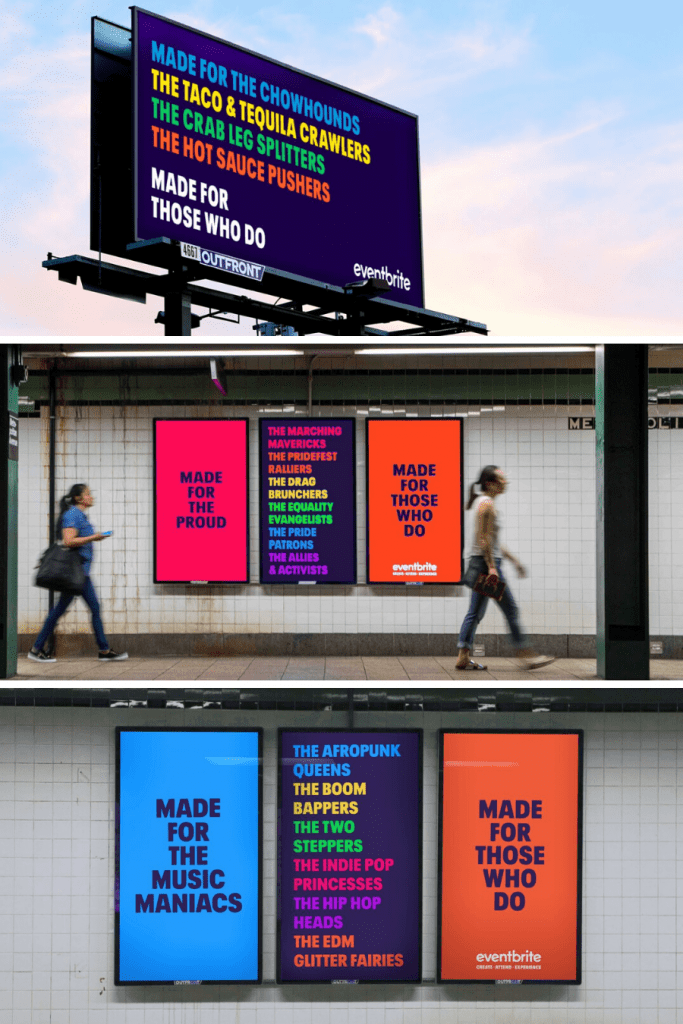
Source: Giant Spoon
Putting it All Together: Combining Several Persuasive Techniques in One Ad
You don’t have to use every single technique in each of your ads. You can use one technique, like many of the examples above do, or you can combine a few that you think will connect with your audience. Noom did this well in an Instagram ad that combined various persuasive techniques. All of these samples are from the same ad.
First, they show facts about drinking beer vs. drinking wine, which utilizes the comparison technique. This also has specificity on its side, because the stats are harder to argue with than a general “beer is worse for you than wine” statement.
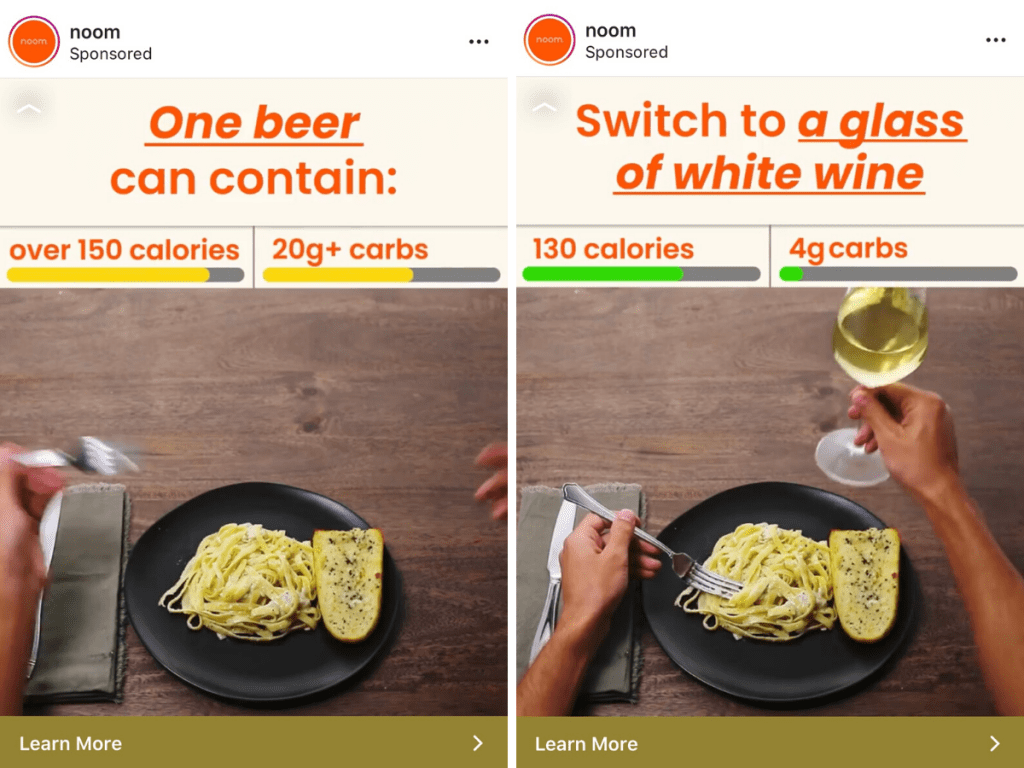
Source: Instagram
Then, they touch on a few pain points and clarify that you don’t have to do any of the things you’re worried about, like restrict your meals, stick to a crazy fitness regime or spend more than a few minutes worrying about any of it. This combines elements of answering the “why,” upsetting and solving, and addressing every concern.
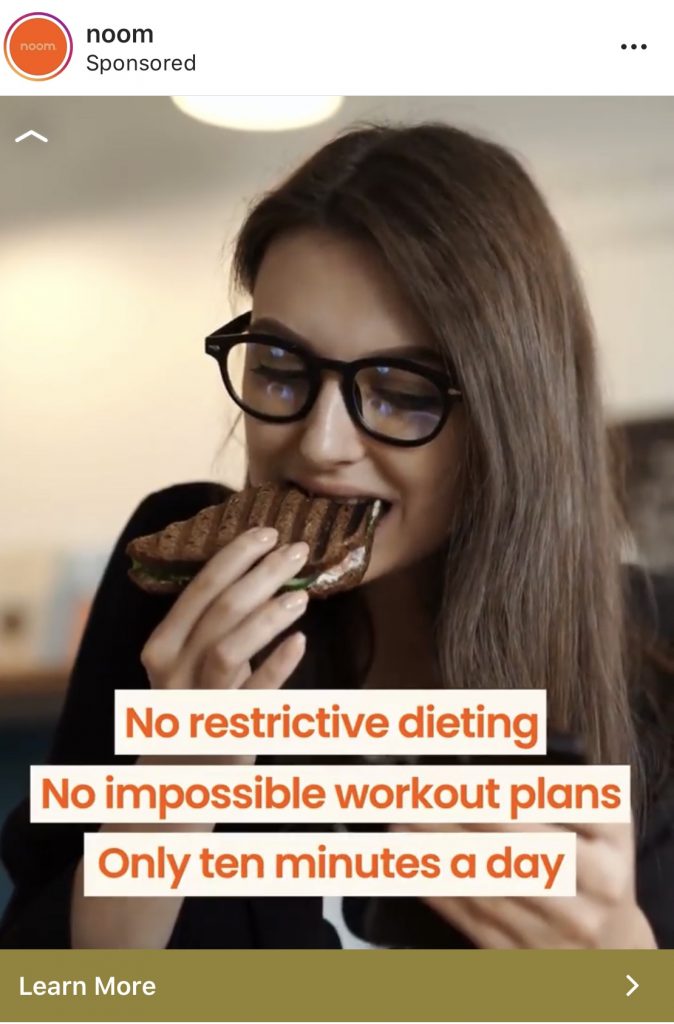
Source: Instagram
Next, they have feedback from real users. One says that she lost 14 pounds with Noom, and another says that not only did she lose, but she was able to keep the weight off.
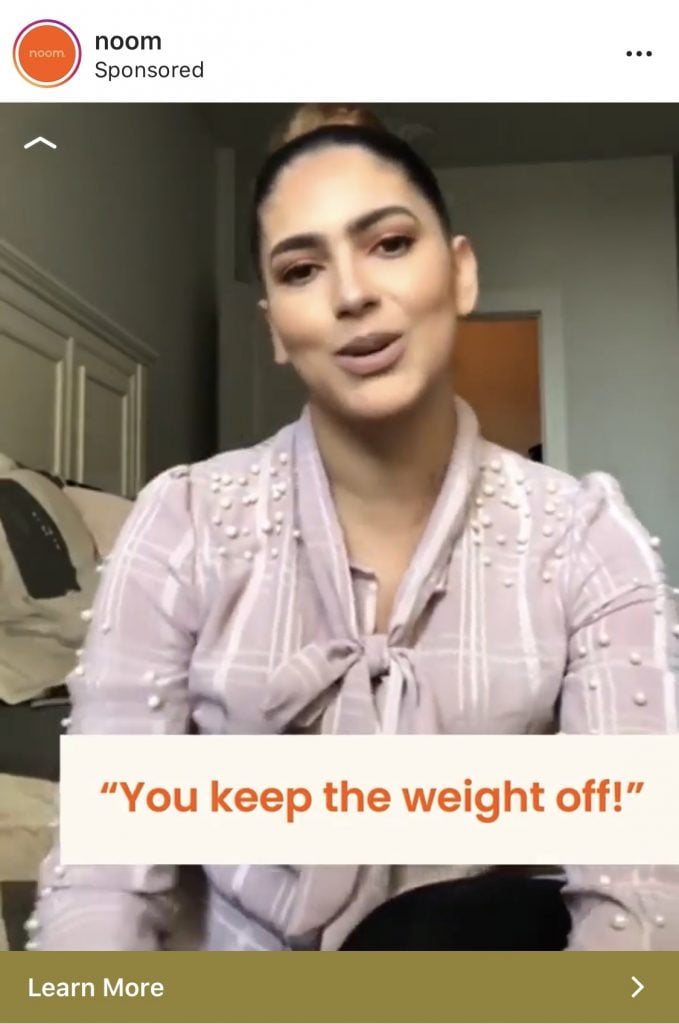
Source: Instagram
Final Thoughts About Using Persuasive Techniques in Advertising
Today, persuasive techniques in advertising and marketing aren’t about forcing people into a decision they wouldn’t make otherwise. Instead, it’s about presenting a rational argument so that the person sees that your path is, of course, the right one. There are many ways to do this, but they all come back to the same thing: showing that your way is better than the alternative. Until someone becomes a regular customer, you have to create enough perceived value to get them to trust you for the first time. And even with returning customers, every time you launch a new product or service, you have to take a few steps back to convince them that you’re the right choice this time, too.
Wondering what the difference is between advertising and marketing? We put together this guide to clear things up.
Featured Image via Stmool / shutterstock.com









great tutorial and it’s our pleasure to follow and read it… thank you